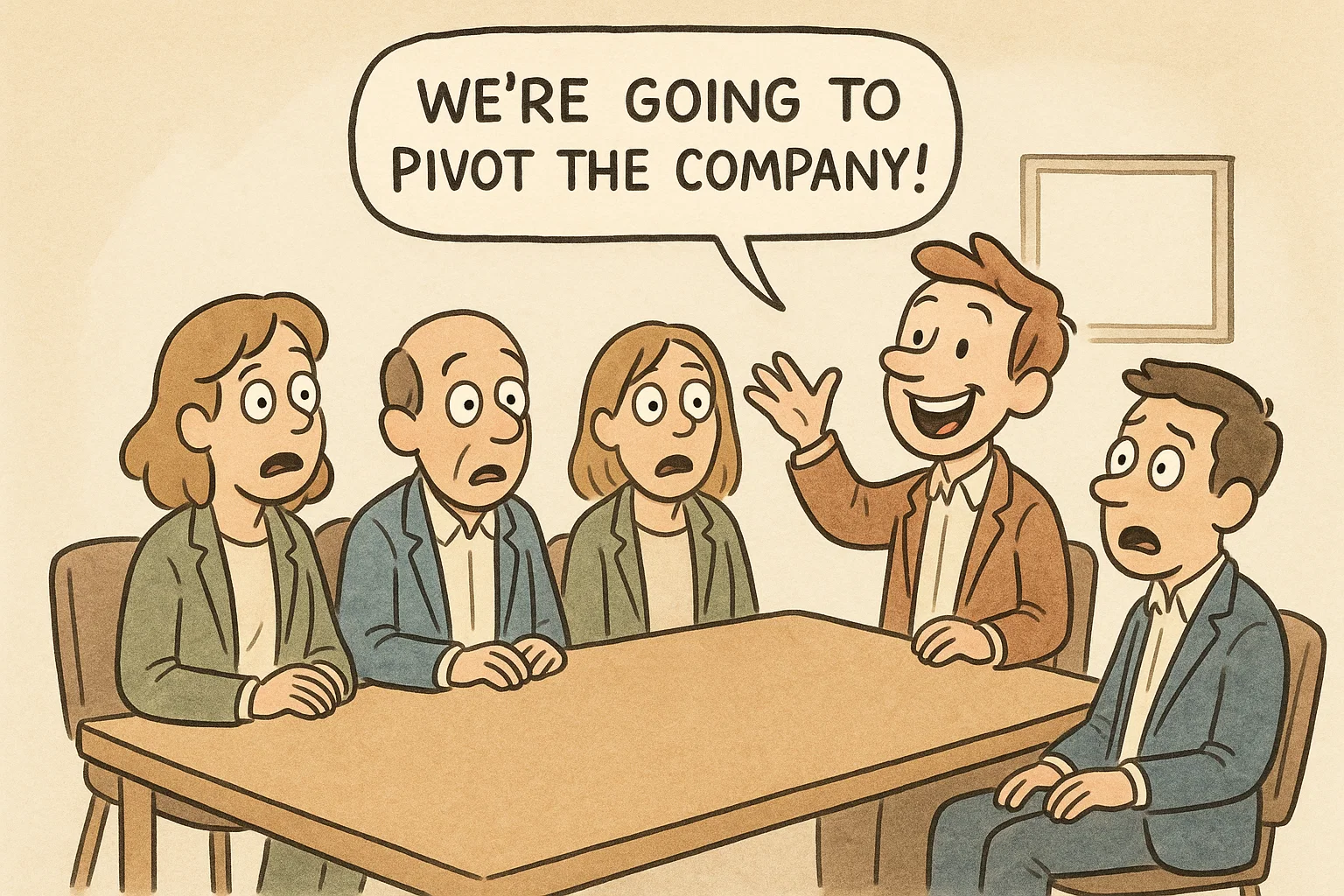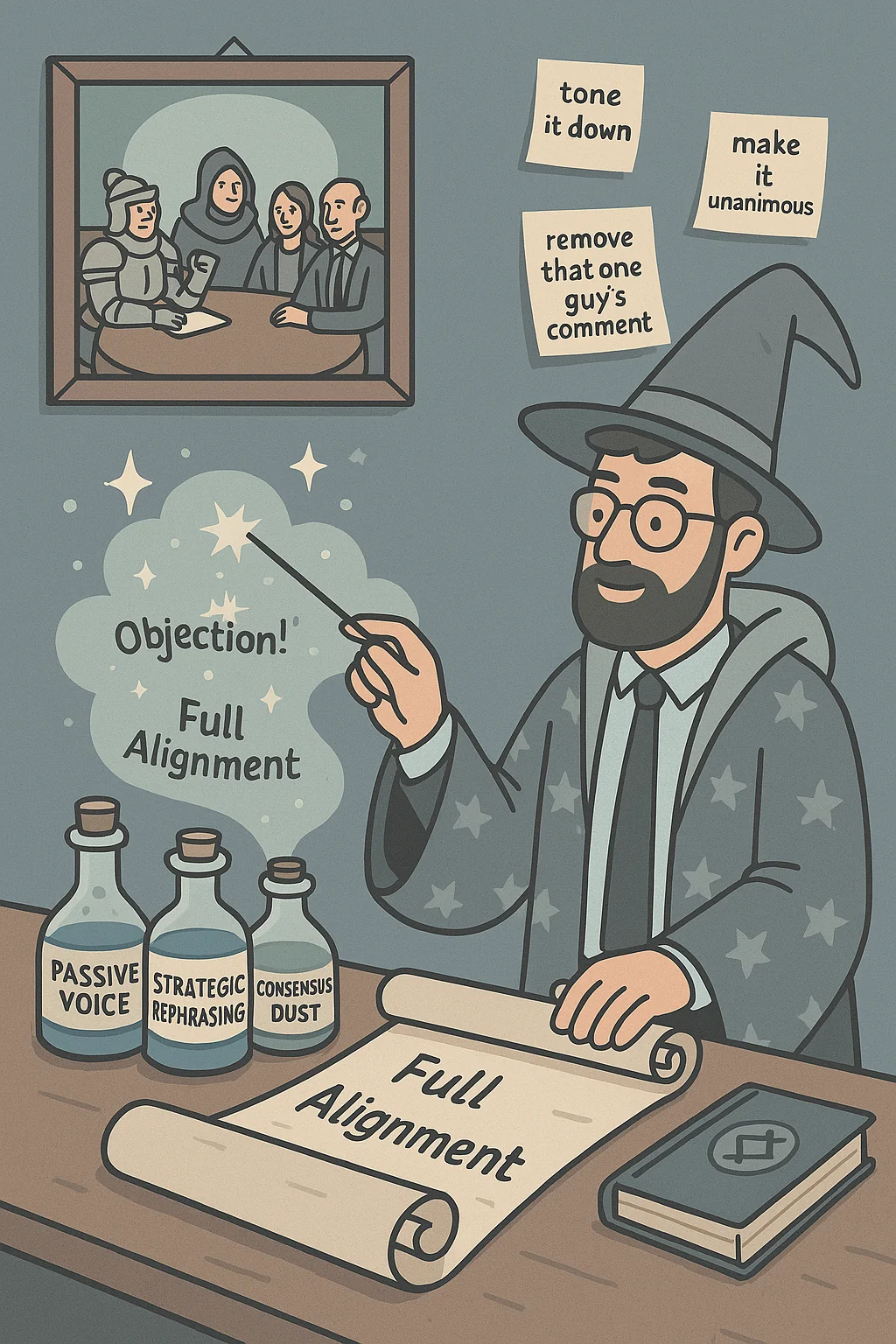· I'mBoard Team · general · 5 min read
The PEAL Framework: A Learning System for Anyone with a Plan
From MVP to fundraising: A data-driven framework for early-stage startups. Learn how to measure product-market fit, track the right metrics, and build compelling investor stories through systematic learning.

Whether you’re a solo entrepreneur with a new idea, a startup founder, or leading an established team, you’ve likely encountered the same challenge: reality rarely matches your plan. The PEAL Framework turns this universal truth from a source of frustration into a powerful learning opportunity.
What is PEAL?
PEAL (Planning, Execution, Analysis, Learning-based Planning) is a methodology built on a simple insight: every deviation between what we plan and what actually happens is a chance to learn and improve. This makes it uniquely valuable for:
- Entrepreneurs testing their first assumptions
- Creators launching new products
- Startup teams exploring product-market fit
- Established teams refining strategies
- Any situation where plans are made under uncertainty
The only prerequisite for using PEAL is having clear expectations about your outputs (what you’ll do) and outcomes (what you think will happen as a result).
The Critical Distinction: Outputs vs. Outcomes
Outputs (What’s in Your Control)
These should be specific, time-bound, and resource-constrained:
- Timeframe: “Launch feature X by March 15”
- Budget: “Within $20,000 development budget”
- Resources: “Using current team of 2 developers”
- Deliverables: “Complete API documentation”
Outcomes (What You’re Trying to Influence)
These must be measurable, metric-driven KPIs:
- User Metrics: “Increase DAU from 10,000 to 12,500 within 30 days”
- Revenue: “Grow MRR from $50,000 to $57,500 in Q2”
- Performance: “Reduce page load time from 2.8s to 1.5s”
- Engagement: “Increase average session duration from 4.5 to 6 minutes”
This distinction serves several critical purposes:
- Makes forecasting more rigorous by forcing specific, measurable predictions
- Creates clear accountability between what’s in our control vs. what we’re trying to influence
- Makes the Analysis phase more objective - you can’t argue with numbers
- Enables pattern recognition across cycles - “We consistently overestimate user adoption by 30%“
Why PEAL Over Traditional Target-Based Frameworks?
In fast-moving environments, particularly startups and innovation-driven organizations, traditional frameworks like OKRs and MBOs assume we know enough to set meaningful targets. Often, we don’t. PEAL embraces uncertainty and focuses on learning as much as execution.

The Four Stages of PEAL
1. Planning
Every cycle starts with planning—not just defining what you’ll do, but also articulating your hypotheses. This means:
- Documenting planned outputs with specific timeframes and resources
- Forecasting expected outcomes with concrete, measurable KPIs
- Articulating the reasoning behind why these actions should lead to results
2. Execution
During execution, you track both what was planned and what actually happened. The focus isn’t on perfect execution but on gathering meaningful data:
- Did you execute as planned?
- If not, what changed and why?
- Were unexpected obstacles encountered?
- Are you tracking both output completion and outcome metrics?
3. Analysis
This is where PEAL stands apart. Instead of measuring success solely based on targets met, analysis focuses on extracting insights:
- Did our hypotheses hold true?
- What unexpected insights emerged?
- What external factors influenced results?
- How did our actual metrics compare to forecasts?
4. Learning-Based Planning
Insights from analysis inform the next cycle of planning. This is more than tweaking numbers—it’s about evolving understanding:
- What should we try next?
- Which assumptions need to be revisited?
- How should strategy adjust based on new learnings?
- How can we improve our forecasting accuracy?

Why PEAL Works
PEAL acknowledges a fundamental truth about innovation and growth: we learn by doing. Instead of treating variances as failures, PEAL treats them as valuable data points that refine future decisions. It transforms planning from a rigid target-setting exercise into an adaptive learning system.
This framework is particularly valuable for:
- Early-stage startups navigating market uncertainty
- Teams exploring new technologies or business models
- Organizations undergoing transformation
- Strategic decision-making where agility is critical
Getting Started with PEAL
The beauty of PEAL lies in its simplicity:
- Document plans and hypotheses with clear outputs and outcome metrics
- Track actual execution and resulting metrics
- Analyze results with curiosity, not judgment
- Use insights to guide the next cycle
Over time, this builds an organizational intelligence system—not just a record of activities and outcomes, but an evolving understanding of what works and why.
Keeping PEAL Practical
PEAL doesn’t have to be complex. At its heart, it’s a systematic way to ask:
- What did we think would happen? (With specific metrics)
- What actually happened? (Measured against those metrics)
- What did we learn?
- What should we try next?
Weekly PEAL: 60 Minutes to Insight
A quick and structured weekly session:
- 20 mins: Review past week’s results vs. plan (both outputs and outcomes)
- 20 mins: Capture and discuss key learnings
- 20 mins: Plan the next week’s activities and expected results
No lengthy PowerPoints—just a simple document or whiteboard.
Quarterly Function-Level PEAL
For broader reviews across teams:
- Requires data preparation but focuses on learning
- Helps spot patterns beyond short-term cycles
- Informs larger strategic shifts
- Reviews both output efficiency and outcome effectiveness
Signs You’re Doing PEAL Right
- Discussions feel insightful, not like presentations
- Team members openly share what didn’t work
- Plans evolve based on real learnings
- Documentation is brief but meaningful
- The focus remains on learning, not justifying variances
- Metrics are specific and measurable
- Both outputs and outcomes are clearly distinguished and tracked
PEAL isn’t just another planning tool—it’s a learning system that turns uncertainty into growth. By embracing the gaps between plans and reality, you create a feedback loop that drives smarter decisions, faster iterations, and long-term success. Whether you’re a solo entrepreneur or leading a scaling team, PEAL can help you navigate complexity with clarity and confidence.



